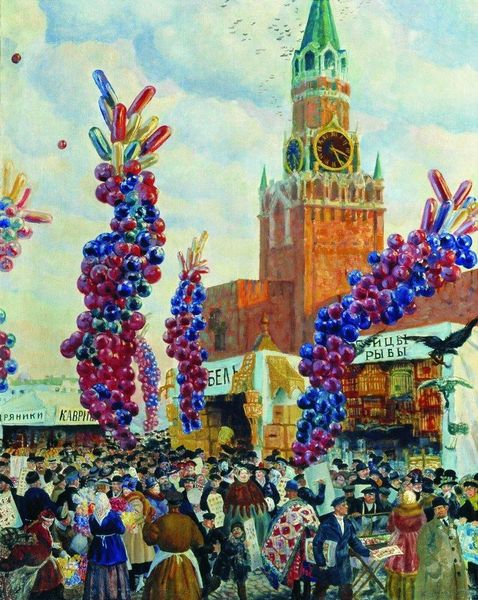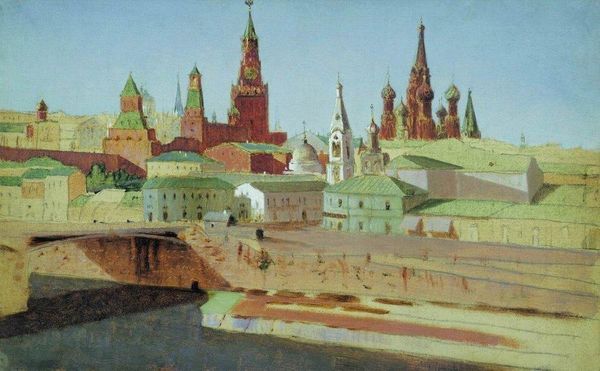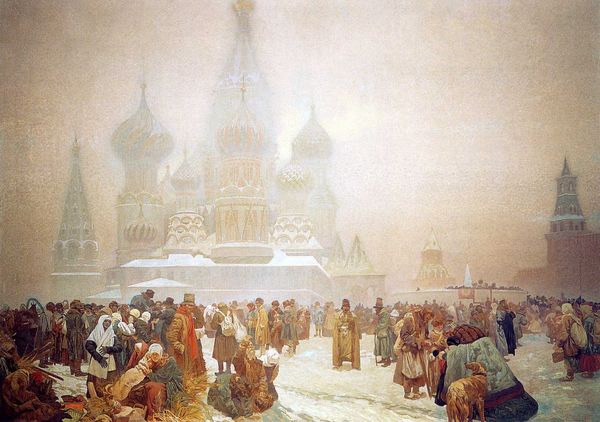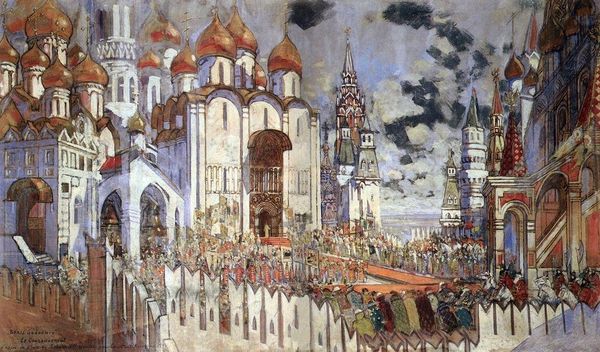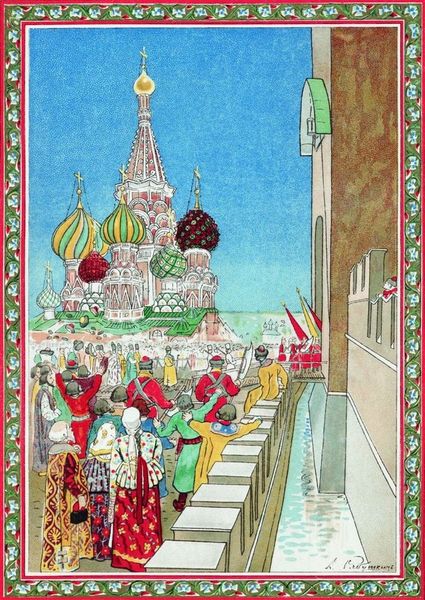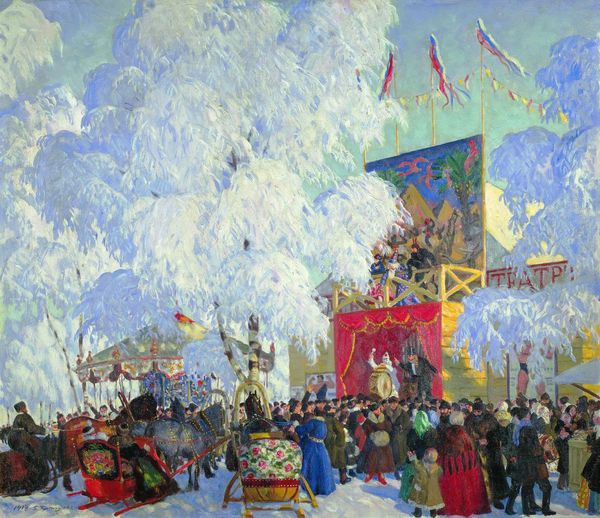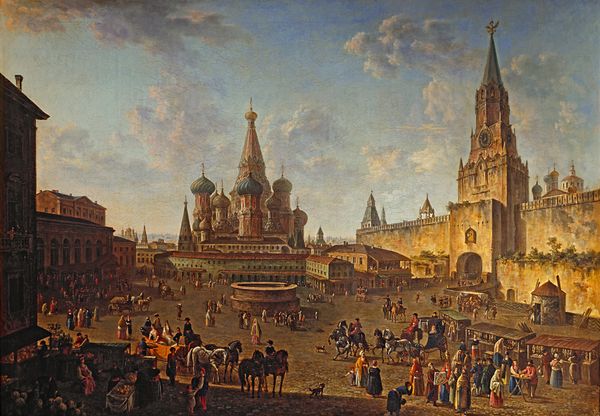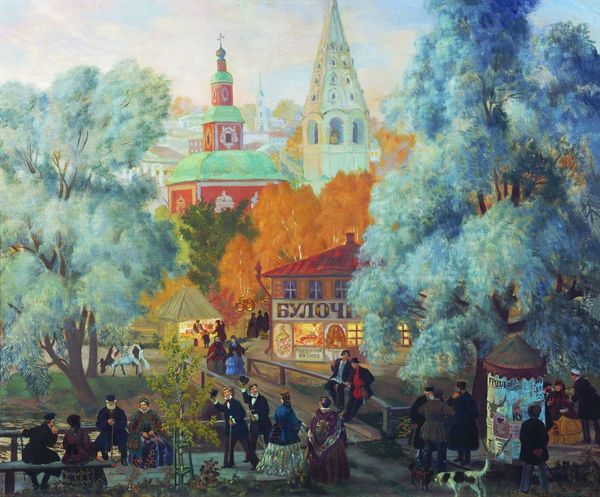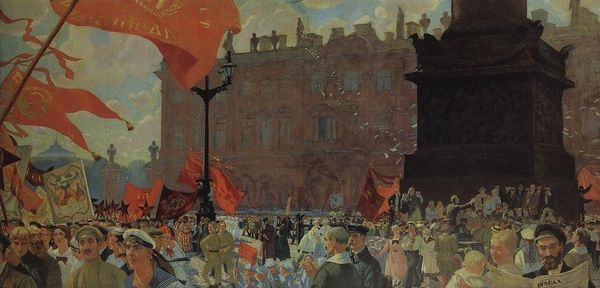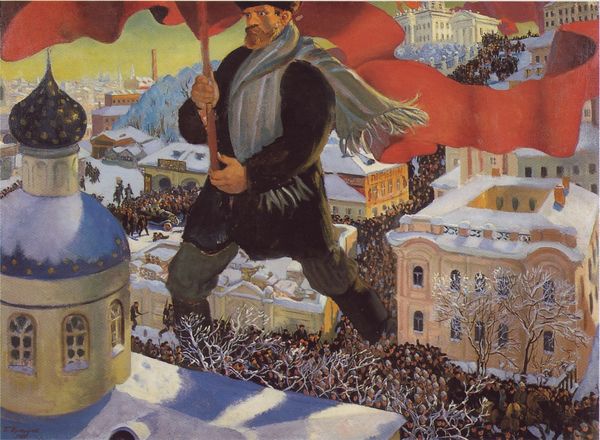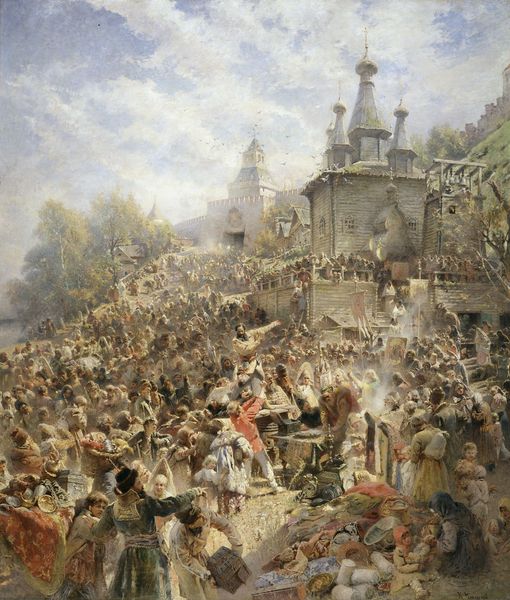
painting, oil-paint
#
sky
#
narrative-art
#
painting
#
oil-paint
#
landscape
#
handmade artwork painting
#
oil painting
#
folk-art
#
naive art
#
russian-avant-garde
#
cityscape
#
painting art
#
genre-painting
#
modernism
Copyright: Public domain
Editor: This is Boris Kustodiev's "Palm Sunday near the Spassky Gate on the Red Square in Moscow," painted in 1917. The energy just leaps off the canvas, so many people, colors, and movement, yet I sense an underlying… longing? What do you see in this piece? Curator: I see a society on the cusp of dramatic change. The festive Palm Sunday celebration, deeply embedded in Russian Orthodox tradition, is rendered almost dreamlike. The repetition of dome shapes—both architectural and in the balloon clusters—creates an echo, suggesting continuity. But the flock of birds heading in many different directions in the sky and some signs with unclear symbolism suggest cultural tensions and possibly social division, as we see on the brink of revolution. Editor: Balloons versus a sacred cathedral – that’s quite a contrast. Do you think Kustodiev was deliberately playing with those symbols? Curator: It's possible. The balloons might represent the ephemeral joys and the promise of modernity, while the cathedral anchors the scene in tradition and history. Red Square itself, traditionally a place of Imperial displays and military parades, takes on a new kind of symbolism here in this folk celebration, yet you feel an uneasy co-existence. Look at how many banners in the background show birds. What did birds mean to Russians at that time? Freedom, certainly, but perhaps something else too, since the birds on those banners all look like carrion. Editor: It does make you wonder. He’s showing all of this excitement and joy, but the looming birds change my initial response. Curator: Exactly. Consider the folk art style itself. Kustodiev evokes the spirit of traditional Russian icons and folk art, styles known for conveying spiritual and cultural memory. Are we seeing an idealised memory of pre-Revolutionary Russia here? The longer you look, the more ambiguous the piece becomes. What new symbol do you think viewers will attach to this painting? Editor: I hadn't considered how much the style adds to that sense of a past era, but the uncertainty does seep through the painting and maybe reflect how memories work: never complete or too vivid, but rather, faded, just like the Russian Empire. Thank you.
Comments
No comments
Be the first to comment and join the conversation on the ultimate creative platform.
